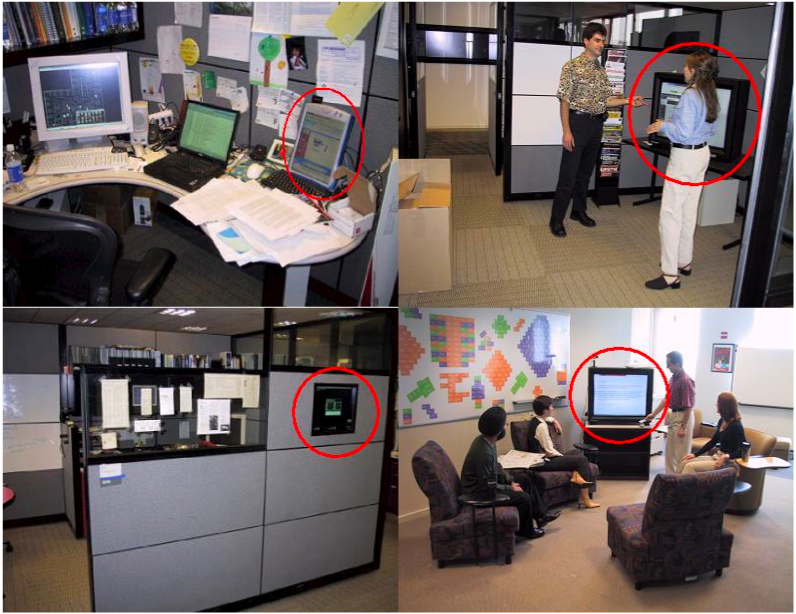Ubiquitous Peripheral Displays: UniCast, GroupCast and OutCast
UniCast: a peripheral display in an individual's office that can display a wide range of interesting — but not extremely urgent or mportant — content that a person may not actively seek out on his or her primary computer workstation, e.g., events of interest, artwork, cartoons, and a range of X-of-the-day Web sites whose content changes daily. Users create a profile for this content, which can then be used by displays in other contexts. GroupCast: a large display in a casual group setting, such as a break area, where the content is selected based on the combined profiles of the group assembled — or walking by — the display at any given time (people nearby are identified via infrared badges). The goal of GroupCast is to foster a stronger sense of community among a group of collocated workers, by creating new informal conversation opportunities based on mutual interests. OutCast: a peripheral display mounted on the exterior of an individual's office that contains content a person may want to communicate about him- or herself to passers-by, such as the office occupant's current location, project descriptions, online demonstrations and interests. As with GroupCast, some portion of an individual's UniCast profile can be used in this context. Publications and Presentations
Promoting Awareness of Work Activities through Peripheral Displays
Personalization and Collectivization at the Intersection of the Virtual and Physical Worlds
UniCast, OutCast & GroupCast: Three Steps Toward Ubiquitous Peripheral Displays
Defragmenting the Organization: Disseminating Community Knowledge through Peripheral Displays |
